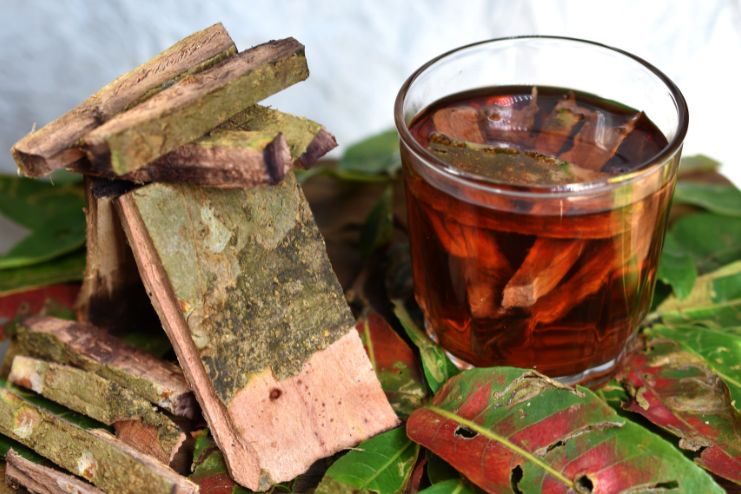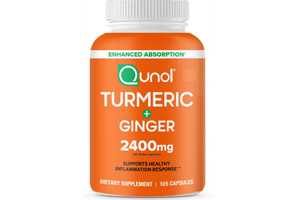Affiliate Disclaimer
Some links in this article are affiliate links. We may earn a small commission if you make a purchase through these links, at no extra cost to you. We only recommend products we find useful to our readersImagine trying to breathe through a straw—tight, shallow, and exhausting. That’s what an asthma flare-up can feel like.
It’s more than just wheezing or coughing; it’s the constant uncertainty of not knowing when the next episode might strike.
Asthma is a chronic respiratory condition marked by inflammation and narrowing of the airways. While inhalers and medications remain essential, more people are turning to natural and holistic approaches to better support their overall well-being. These complementary therapies aren’t a replacement for medical treatment, but they may help reduce inflammation, support lung function, and calm the nervous system.
Living with asthma means managing more than just physical symptoms—it’s a daily effort to stay in tune with your environment, your emotions, and your body.
In this article, we’ll explore natural ways to manage asthma more holistically and support your health from the inside out.
Yoga for Asthma Management

Yoga for asthma relief isn’t just about flexibility—it’s a holistic practice that supports respiratory health by enhancing lung function, reducing stress (a known asthma trigger), and improving digestion. According to yoga philosophy, digestion is linked to inflammation and toxin buildup.
Effective Yoga Postures for Asthma:
If you or anyone you know suffers from asthma, here are a few yoga poses that help:
- Sirsasana (Headstand): Promotes circulation to the respiratory system and activates the pituitary gland, which aids in modulating the body’s response to stress.
- Sarvangasana (Shoulder Stand): Opens the chest, enhances bronchial action, and promotes more efficient oxygen exchange.
Here are a few popular yoga mats you can buy online:
1. Amazon Basics 1/2 Inch Extra Thick Exercise Yoga Mat with Carrying Strap

2. Yoga Mat, 1/2-Inch Extra Thick High Density Exercise Mat

3. Retrospec Solana Yoga Mat 1″ Thick With Nylon Carry Strap for Men & Women

Pranayama (Yogic Breathing Techniques):

- Anulom Vilom (Alternate Nostril Breathing): Balances sympathetic and parasympathetic nervous functioning, relaxes the mind, and maximizes oxygen efficiency.
- Bhastrika (Bellows Breath): A powerful exhalation and inhalation technique that loosens mucus, energizes the lungs, and maximizes oxygen consumption.
Incorporating yoga into your routine provides natural ways to reduce asthma symptoms—improving breath control, calming inflammation, and minimizing reliance on inhalers. Over time, it can become a powerful part of your asthma-friendly lifestyle.
Read More: 10 Common Triggers That Could Worsen Your Asthma
Breathing Exercises for Asthma

Before reaching for another puff of your inhaler, consider this: your breathing technique might be making your asthma worse or better. Breathing retraining techniques have shown promising results in managing symptoms naturally, especially when used consistently. However, these work best when used alongside medical care.
Popular breathing exercises for asthma include:
Buteyko Method: This breathing exercise focuses on shallow, nasal breathing to normalize hyperventilation that occurs in asthma. By stabilizing carbon dioxide levels, the Buteyko method can decrease airway sensitivity and enhance overall breathing efficiency.
Papworth Method: The Papworth method involves diaphragmatic breathing along with relaxation techniques. It trains asthmatics to breathe through the nose using the diaphragm instead of the chest, decreasing breathlessness and anxiety during attacks.
Benefits:
- Reduces the frequency and severity of symptoms.
- Improves lung function.
- Calms the nervous system and fosters emotional balance.
Acupressure and Acupuncture for Asthma Relief

Acupuncture: A traditional Chinese Medicine practice, acupuncture involves inserting thin needles into targeted points to restore the flow of energy and decrease inflammation. Clinical research indicates its potential to enhance lung capacity and decrease symptoms over time.
Acupressure: Pressure to areas such as Lung 7 (LU-7) on the wrist can reduce coughing and make breathing easier.
Advantages:
- Decreases airway resistance.
- Eases tension in chest muscles.
- Decreases the frequency of attacks.
Read More: Acupressure Mats: Can Lying on Spikes Improve Your Sleep & Pain?
Ayurveda for Asthma Relief

Asthma is a Kapha and Vata disorder that results from toxin accumulation (Ama), inefficient digestion, and dosha imbalance. Ayurveda addresses the root cause through detoxification, herbs, and diet.
Major Ayurvedic Remedies:
Panchakarma: A five-step detoxification process that removes toxins from the respiratory system.
Herbs for Relief from Asthma:
- Haritaki (Chebulic Myrobalan): Reduces symptoms when chewed at bedtime.
- Arjuna Bark: Insulates the lungs and aids circulation.
- Euphorbia (Asthma Herb): Euphorbia hirta, also called “asthma weed,” is utilized in traditional herbal practice to treat asthma, bronchitis, and other respiratory diseases. It is known to calm spasms of the bronchi and facilitate breathing.
- Ginger and Garlic: Ginger and garlic are known for their anti-inflammatory properties and may help ease asthma symptoms by potentially relaxing airway muscles and reducing inflammation.
Dietary Adjustments: Ayurveda suggests light, warm, easily digested foods to counterbalance Kapha and promote lung health.
D-Mannose for Asthma Relief

D-mannose is a naturally occurring sugar found in cranberries, apples, and other fruits.
Although it’s most famous for its urinary tract benefits, D-mannose might also help decrease inflammation in the respiratory tract and support lung function. Although still preliminary, it is being studied whether D-mannose may soothe and reduce asthma symptoms.
Massage Therapy for Asthma

Back and Chest Massage: Gently massaging the chest area helps loosen tight respiratory muscles and can make breathing easier during flare-ups.
Aromatherapy Integration: Using essential oils like eucalyptus (decongestant), lavender (relaxant), and peppermint (bronchodilator) enhances the effects of massage.
Benefits:
- Facilitates chest muscle relaxation.
- Enables deep breathing.
- Supports anxiety and stress-initiating trigger diminishment.
Homeopathy for Asthma Treatment

Homeopathy for asthma offers personalized treatments according to one’s specific patterns of symptoms, with gentle stimulation of the body’s healing mechanisms.
Typical Remedies:
- Phosphorus: Helpful for wheezing and tightness.
- Pulsatilla: For asthma that worsens in the evening or from rich foods.
- Carbo Vegetabilis: Alleviates gas and breathlessness.
- Natrum Muriaticum: Effective for asthma linked to emotional stress or salty cravings.
Note: Always consult a certified homeopath to match the right remedy to your constitution and triggers.
Naturopathy and Natural Therapies for Asthma

Naturopathy targets detox and balance through the body’s healing potential.
Important Natural Remedies:
- Bishop’s Weed (Ajwain) with Buttermilk: Taking ½ teaspoon of ajwain with buttermilk twice daily may help relieve chest tightness and promote easier breathing.
- Gooseberry (Amla) with Honey: This combination is traditionally used to soothe the airways and may offer quick relief during mild asthma attacks.
- Garlic with Milk: Boiling a few garlic cloves in milk and drinking the mixture, especially in the early stages of asthma, can help reduce airway inflammation and prevent symptoms from worsening.
- Ginger Tea with Garlic: Sipping on ginger tea infused with garlic cloves may relax bronchial muscles and ease breathing by lowering inflammation.
- Turmeric Milk: Mixing one teaspoon of turmeric powder into warm milk reduces airway inflammation and supports overall lung health.
Check out one of our favorite turmeric powders – Qunol Turmeric Curcumin with Black Pepper & Ginger.

Here are some naturopathic remedies effective in mitigating asthmatic symptoms:
Cleansing & Detoxification:
- Colon Cleansing: Giving yourself an enema is a detoxification method and prevents auto-intoxication, which may lead to feelings of respiratory distress.
- Hydrotherapy: The application of wet packs on the chest, hip baths, and hot foot baths can help in relieving lung congestion and also help in improving breathing.
- Warm Water Therapy: Drinking warm water both before and after meals can initiate digestion and prevent the excess formation of mucus in the respiratory tract.
These treatments are most effective as part of a long-term lifestyle plan.
The Role of Diet in Asthma

What you eat can affect the way you breathe.
An anti-inflammatory diet consisting of fruits, vegetables, whole grains, and omega-3 fatty acids can quell airway inflammation and enhance lung function.
Processed foods, too much sugar, and even dairy (for some people) may induce symptoms. Eating smaller, more frequent meals can also prevent bloating, which compresses the diaphragm.
Don’t miss our full article if you want a deeper dive into how your plate influences your lungs.
When to Seek Medical Advice

Natural remedies can be potent asthma treatment options, but they are not substitutes for medical care. Seek professional help if:
- Asthma attacks become more severe.
- You have more frequent nighttime attacks.
- There’s a decreased response to regular medication.
Integration Matters:
Alternative or holistic treatments should support, rather than substitute, standard medical care. A tailored asthma action plan is necessary for safety and long-term success.
Conclusion
Asthma doesn’t have to be managed with just inhalers and prescriptions. From yoga and pranayama to Ayurveda, homeopathy, massage, acupressure, naturopathy, and conscious dietary habits—there are many natural asthma remedies available that can facilitate easier breathing and long-term relief.
These holistic approaches don’t merely target symptoms—they work on the root of imbalances, reduce triggers, and promote your overall health.
The outcomes may differ from individual to individual, and guidance and consistency are key. Always refer to your healthcare provider before making changes to your asthma plan.
References
- https://allergyasthmanetwork.org/what-is-asthma/natural-asthma-treatments/
- https://www.nhlbi.nih.gov/health/asthma/living-with
- https://www.webmd.com/asthma/what-is-the-buteyko-breathing-technique
- https://www.webmd.com/asthma/what-is-the-papworth-method
- https://www.adityabirlacapital.com/abc-of-money/yoga-for-asthma-breathing-exercises-poses
- https://pmc.ncbi.nlm.nih.gov/articles/PMC7032670/
In this Article















